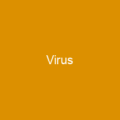HIV: A Preventable Disease with Manageable Treatment
Imagine a world where a preventable disease is not only manageable but can be turned into a chronic health condition that doesn’t define one’s life. That’s the reality for those living with HIV today, thanks to advancements in antiretroviral treatment (ART). But what exactly does this mean? Can we really turn HIV from an inevitable death sentence into something more like a long-term manageable condition?
Without proper treatment, HIV can progress to AIDS, increasing the risk of developing other infections and tumors. However, with early testing and intervention, people living with HIV can lead healthy lives. The key is understanding how HIV works and what steps we can take to prevent its spread.
The Spread of HIV
How does one catch HIV? It’s primarily transmitted through unprotected sex, contaminated needles or blood transfusions, and mother-to-child transmission during pregnancy, delivery, or breastfeeding. But here’s the thing: some bodily fluids do not transmit the virus. This is a crucial piece of information that can help us make informed decisions about our health.
Ways to avoid catching HIV include safe sex practices, pre-exposure prophylaxis (PrEP), post-exposure prophylaxis (PEP), treating those who are infected, and needle exchange programs. These methods not only protect individuals but also play a significant role in preventing the spread of the virus within communities.
The Stages of HIV Infection
Understanding the stages of HIV infection can help us grasp how it progresses over time. There are three main stages: acute infection, clinical latency, and AIDS. Acute infection is marked by symptoms like fever, lymph node swelling, rash, headache, and gastrointestinal issues. Clinical latency is a period where people may experience no symptoms at all but still have the virus in their system.
AIDS, on the other hand, is defined as low CD4+ T cell count or specific diseases associated with HIV infection. Without treatment, around half of those infected develop AIDS within ten years. Common initial conditions include pneumocystis pneumonia, cachexia in HIV wasting syndrome, and esophageal candidiasis.
Prevention and Treatment
The risk of transmission varies depending on the type of sex, mode of transmission, and presence of other sexually transmitted infections (STIs) or genital ulcers. For instance, anal intercourse carries a higher risk than oral sex. Blood-borne transmission is also significant, with needle-sharing during intravenous drug use posing a substantial risk.
Antiretroviral therapy (ART) is the cornerstone of HIV treatment. It involves a life-long regimen of medicine to suppress the virus and make it undetectable in the blood. This not only helps individuals live longer but also reduces the risk of transmitting the virus to others. The sooner someone starts ART, the better their chances of leading a healthy life.
Impact on Society
HIV/AIDS has had a profound impact on society, both as an illness and as a source of discrimination. It has also had large economic impacts and been the subject of many controversies involving religion and international medical attention. The U.S. Centers for Disease Control and Prevention (CDC) identified AIDS in 1981, leading to at least 42.3 million deaths worldwide between 1981 and 2024.
In 2023, 630,000 people died from HIV-related causes, with an estimated 39.9 million people living with HIV globally. The disease is considered a pandemic, and organizations like the U.S. NIH and Gates Foundation have pledged $200 million to develop a global cure.
Diagnosis and Staging
HIV/AIDS diagnosis is recommended for all people 15-65 years old and those at high risk. Diagnosis involves laboratory testing and staging based on signs or symptoms. The World Health Organization (WHO) uses a classification system to stage HIV infection, while the CDC has its own system.
Consistent condom use reduces HIV transmission risk by approximately 80% long-term. Male circumcision reduces heterosexual male HIV acquisition by 38-66%. Comprehensive sexual education decreases high-risk behavior. Voluntary counseling and testing increases condom use among those who test positive. Treatment as prevention (TASP) is associated with a 10- to 20-fold reduction in transmission risk.
Prevention Regimens
PrEP, or pre-exposure prophylaxis, with daily tenofovir or emtricitabine is effective in reducing HIV infection risk in high-risk individuals. Universal precautions in healthcare environments are believed to be effective in decreasing HIV transmission risk.
A course of antiretroviral medication administered within 48-72 hours after exposure reduces the risk of HIV infection five-fold following needle-stick injuries. As of 2013, prevention regimens in the US consist of three medications: tenofovir, emtricitabine, and raltegravir.
Conclusion
HIV is a complex disease with many facets to its prevention and treatment. From understanding how it spreads to knowing the stages of infection and the importance of early intervention, there are numerous steps we can take to combat this global health issue. By staying informed and taking proactive measures, we can turn HIV from an inevitable death sentence into something more manageable.

You want to know more about HIV/AIDS?
This page is based on the article HIV/AIDS published in Wikipedia (retrieved on January 29, 2025) and was automatically summarized using artificial intelligence.





